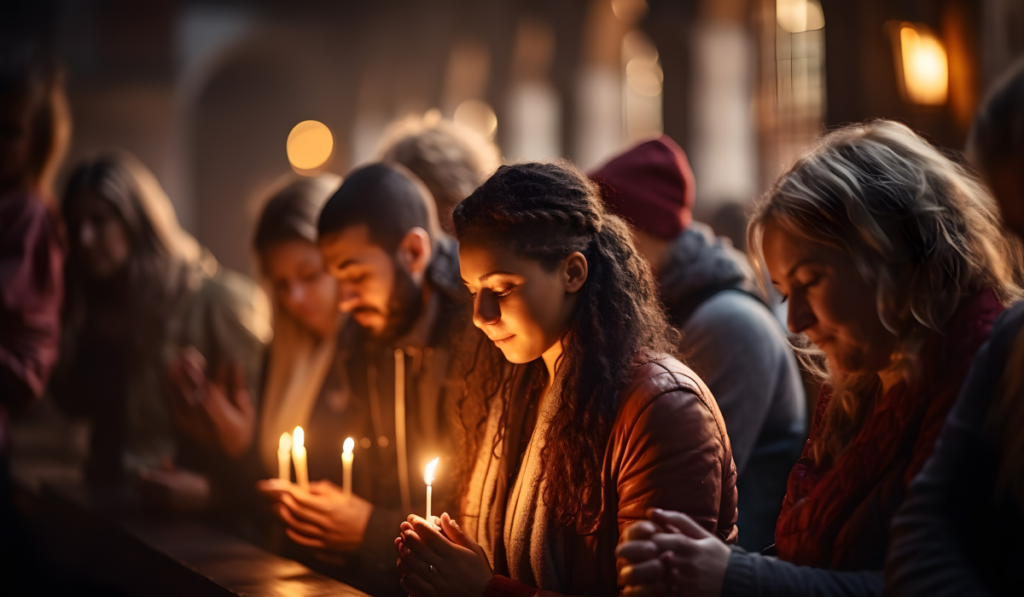
What Your Church Should Be Doing About Coronavirus
As more of public life shuts down on a daily basis, many religious leaders have become worried about the effect of coronavirus on churches. Following the first reported infection in America, it took less than two months for the Centers for Disease Control (CDC) to recommend the cancellation of events with more than 50 people. This touches countless churches, but this doesn’t mean you can’t survive the storm.
Safety with In-Person Church Services
The median size of congregations in American churches is 75 members. This easily surpasses the “50 people gathering” recommendation set by the CDC. Even smaller houses of worship can be risky due to confined spaces. There was no mandatory federal order to cease these gatherings early on, though, so if you plan on having in-person services, you must take precautions.
The Bible tells us in 1 Peter 5:2 that we should gladly care for the flock that God has entrusted to us. With that in mind, make sure to utilize the following strategies:
- Sanitize surfaces in all common and high-traffic areas (e.g. chairs, handrails, hymnals, etc.) between services.
- Place collection plates at the entrances and throughout the church. Do not pass an offering plate around.
- Forego the Eucharist. If you offer communion — a risky endeavor — do not use a common cup. Consider sealed packets of bread and wine, and place wafers in parishioners’ hands instead of their tongues.
- Have greeters skip physical greetings and instead squeeze/pump sanitizer in each congregant’s hands as they enter.
- Temporarily halt meet and greets. Having church members walk around to shake everyone’s hand is a public health nightmare. Skip this activity until things are back to normal.
- Tell elderly members to stay home. Those suffering the most serious effects of coronavirus are typically over the age of 60. Tell these members to avoid endangering their health.
You’ll want to convey to your congregation the measures taken within your ministry. This will put their minds at ease. Halting in-person services for the time being, though, seems like the best move forward. Even in unaffected communities, following CDC guidance can reduce potential infection.
Host Virtual Services
If you have ever made a donor thank you video, you’re well-equipped to host virtual church services during the coronavirus outbreak. This is because advancements in available technology have made the process as simple as owning a social media page and pointing a camera. These cameras need only the capability of hooking to your computer, and in a pinch, a tripod and iPhone can do wonders.
Remember that congregants won’t have a 360-degree view when sitting at home. This means placing all the visual aspects of the service within the camera’s line of sight. You should also consider a few practice recordings so you have an idea of what the final product will look and sound like. The only thing left is to head over to YouTube or Facebook and start the live stream.
Rethink Donations and Offerings
Placing collection plates throughout your building is a great way to hinder coronavirus in churches. Unfortunately, your revenue is still going to take a hit. Families are staying home out of fear of the virus, and CEO members (“Christmas and Easter Only”) are very likely to miss one of their periodic visits thanks to the emerging pandemic. Even with these difficulties, it’s possible to keep offerings and donations coming in.
The most important financial steps you should currently be taking involve setting up digital giving tools. Collecting donations via text, app or online will help members continue to give without leaving their homes. This is the safest way your church can collect offerings as congregants engage in social distancing, and if public gathering bans become widespread, it may be your only recourse.
Continue Essential Services in a Safe Manner
As every church leader knows, a lack of congregants doesn’t equate to a lack of work. Administrative, operational and a host of other essential tasks must continue in order to ensure you’re on track once the pandemic ends. While it may seem safer to simply end all activities, technology allows us to keep fighting the good fight even in the direst circumstances.
Whenever an important meeting or another essential service must take place, consider video conferencing, email, web-based seminars and conference calls. The amount of mobile and web-based tools available means things can keep running in the background even when the pews are empty. Having a continuity of operations plan is essential in all situations.
Your Church Can Survive Coronavirus
From the loss of new congregants over the April religious holidays to deficits in funding that result from a lack of tithing, the effects of coronavirus on churches are numerous. Fortunately, there are steps you can take to mitigate these difficulties. It’s important to remember that God put you into this position for a purpose. Now is the moment to show he made the right decision.


